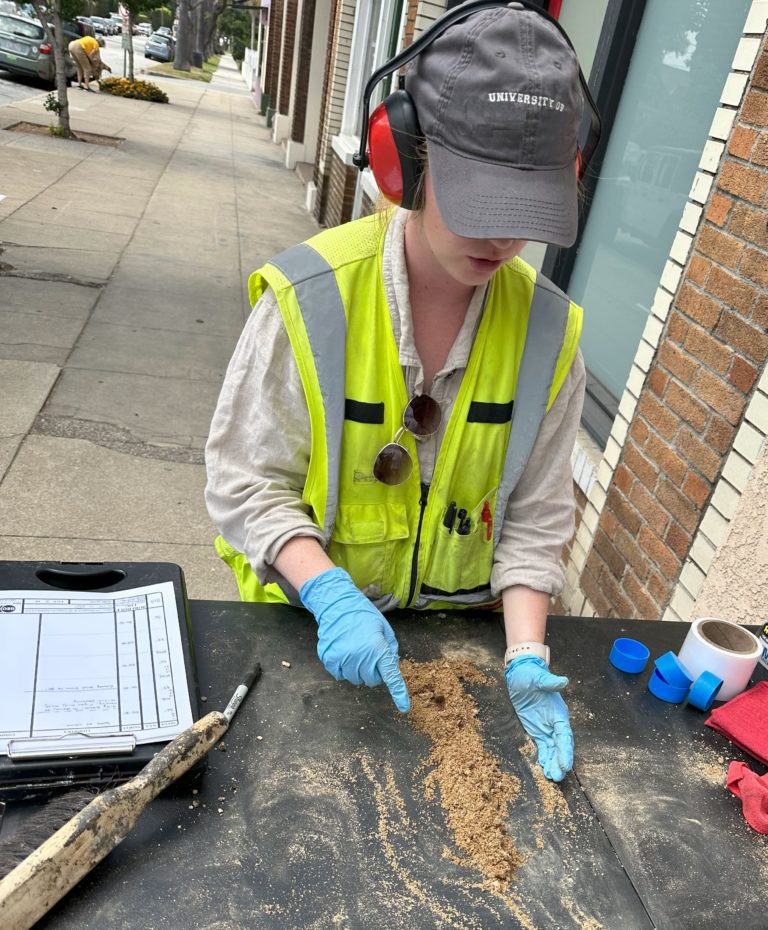Bismuth (Bi) – The Popular Rainbow Element
Bismuth Chemical & Physical Properties
Bismuth has been known and used by humans for hundreds of years for its host of remarkable properties. The mineral we know as bismuth was originally referred to as Wismut by 15th-century German monks, the name coming from the German phrase meaning “white mass.” Bismuth is well-known as a useful mineral in industry and medicine due to its array of unique properties. It is the most diamagnetic of all metals, meaning it is the least attracted to magnets. Unlike most minerals, bismuth also expands when it solidifies, rather than contracting. The mineral is poorly conductive with a low melting point, making it particularly useful for molds and alloys.
Bismuth is a Metal
Bismuthinite (Common Bismuth Mineral)
Bismuthinite is a common bismuth mineral, composed of bismuth sulfide (B2Si3). This mineral can be used as an ore for mining bismuth, with the most coming from the Tanza Mine in Bolivia. Other large masses have been found in Australia, England, and France.
Bismite (Common Bismuth Mineral)
Bismite is another bismuth-containing mineral, composed of bismuth trioxide (Bi2O3). Although most bismuth minerals are darker in color, bismite’s color can range from greyish green to bright yellow. This mineral is also most often found in Bolivia, particularly at the Colavi Mine.
Naturally Occurring Bismuth
In its natural form, bismuth is usually a silver color with a pinkish or silvery metallic luster. The mineral is as abundant as silver, and is commonly found with lead, zinc, and silver ores, and in the compounds of bismite and bismuthinite. It is most notably found in England, Bolivia, Germany, and Australia, although it has also been located in Canada and Mexico.
Synthetic and Lab Grown Bismuth
Most bismuth found in gem and crystal shops is grown in a lab to achieve their unique hopper-crystal formation and multicolor iridescence. Hopper crystals form when the crystals grow quickly with a small electrical charge, growing faster along the outside than the slower interior. This creates angular, square-shaped crystals with a unique and remarkable shape. The iridescence of these minerals comes from an oxide layer formed around the crystals immediately when they are formed, giving bismuth the rainbow appearance it is so well known for.
What is Bismuth Used For?
Although bismuth is a heavy metal, bismuth compounds are widely used in drugs used to treat infections, stomach conditions, and even in anticancer drugs. The common well-known stomach remedy Pepto-Bismol even gets its name from the versatile mineral.
Bismuth is mostly used for industrial and commercial purposes, primarily in metal alloys. Its low melting point allows bismuth to be used in castings and molds and can even be used in fire detection equipment and fire extinguishers. The compound bismuth phosphomolybdate is used to make acrylic fibers, paints, and plastics. Bismuth telluride is also used in alloys in thermoelectric devices as an insulator.
How is Bismuth Used in Medicine?
Bismuth has been used in medicine since 1786. Today, bismuth compounds are widely used in drugs to treat infections, stomach conditions, and even in anticancer drugs. Even though bismuth is a heavy metal, is has a relatively low toxicity which makes it safer to ingest in medicine. It is most widely used for its antibacterial properties, which can be used in treatments for syphilis, diarrhea, and colitis.
Bismuth Subsalicylate
Bismuth subsalicylate is a bismuth-containing compound that has been used in stomach medications for over 100 years. It was first used to treat cholera infections and is now used in modern medications. The compound is composed of salicylic acid and bismuth. Bismuth Subsalicylate can be used to treat nausea, heartburn, and diarrhea over the counter and can come in the form of liquid, tablet, or capsule.
Why does bismuth make your stomach feel better?
Bismuth subsalicylate is the bismuth compound used in stomach remedies. Bismuth has been used in Pepto-Bismol and other stomach medications for over a century, but the exact mechanism providing its stomach-soothing effects is not known. Recent studies have found that this may be due to to be from the compound’s combined anti-inflammatory and antimicrobial actions, which together can treat diarrhea and other stomach ailments.
Is Bismuth Toxic to Humans?
Bismuth has a low toxicity to humans, hence its use in medicine but there have still been reported cases of bismuth over-dosage due to its low toxicity. Bismuth toxicity can lead to renal failure or kidney disease, targeting the kidney, brain, liver, and bones. Acute signs can also include abdominal pain and oliguria, while chronic bismuth toxicity could lead to changes in behavior and movement disorders.
Is Bizmuth Radioactive
Bismuth was believed to be the heaviest metal that wasn’t radioactive, but this was later discovered to be untrue. In 2003, a team of French scientists discovered that bismuth has one of the longest-discovered half-lives of any element, meaning that it is in fact slightly radioactive. These scientists discovered that bismuth-209 decays into thallium-205 with a half-life of 20 billion-billion years. This is over one billion times greater than the estimated age of the universe. Although bismuth is technically radioactive, its exceptionally long half-life means it is still extremely safe for humans.






